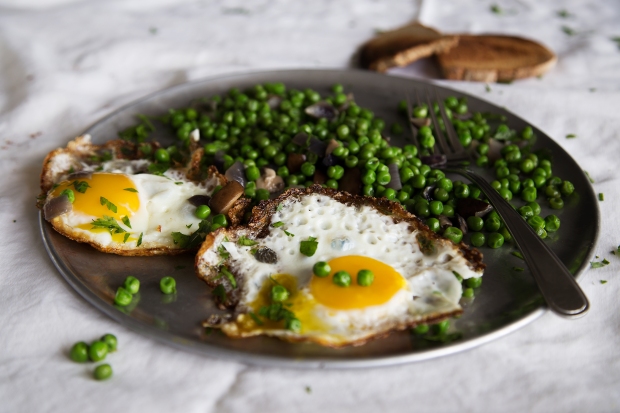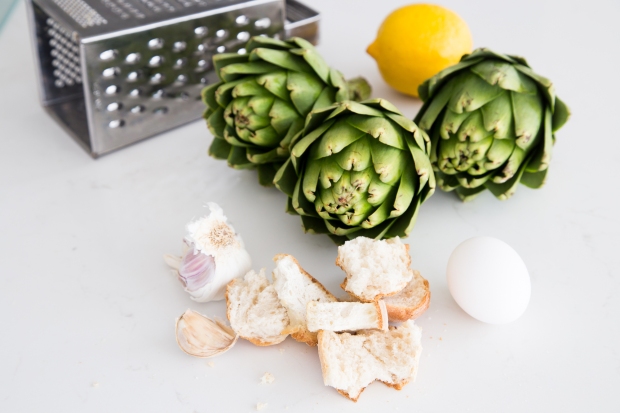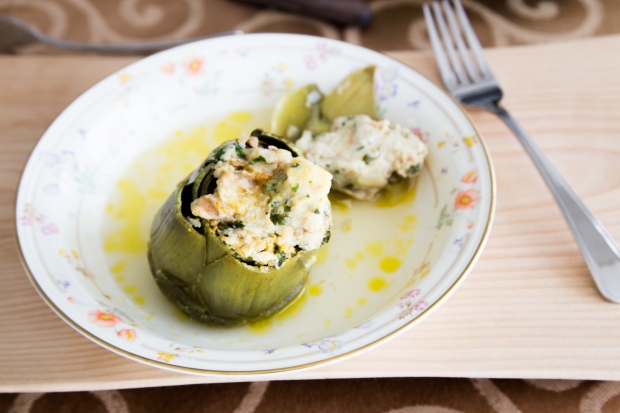My mom has been making pickled vegetables for as long as I can remember, including these Pomodori Verdi Sott’Olio.
As a teen, my sandwiches were layers of prosciutto, mortadella, and mozzarella cheese with a helping of mom’s pickled vegetables stuffed into a crusty bun. Since then, I’ve helped my mom make her pickled vegetables. The type of vegetable always varied, from eggplant and asparagus, to today’s recipe: green tomatoes.

Writing her recipe out now, I’ve realized two things:
1. It’s a lot easier to make than I remember
2. It’s intuitive and doesn’t fit nicely into exact measurements
How much oil do you need? “Enough to cover the vegetables”. What about salt? Vinegar? “You know, enough to cover everything”. It’s very much an authentic, old-school Italian recipe.

While my mom and I were fine tuning the recipe, she called her sister in Italy to make sure I had the best possible recipe. We tapped straight into the source: the modern Italian home cook! Along the way we even found out that some in Italy substitute white wine for water. Who knew?
Keep in mind that the “exact” ingredients I list below are approximations and will vary. The classic amount is “enough to cover”, but that can change depending on the width of the bowl and jar you’re using. It’s better to add a little too much salt/vinegar/water/oil than the opposite.

Find a cool, dark place to store these when finished and you can enjoy them year round in sandwiches and hamburgers, or with different appetizers. Try it on toast with ricotta cheese and roasted ripe tomatoes. Yum.
Don’t be intimidate by all those recipe steps below! Most of it is letting the ingredients sit around (they’re pickling) and draining liquid once in a while.
**Carla’s tip: You can change the seasoning to your preference. Experiment with fresh rosemary or thyme and double or reduce the garlic. These also make unique gifts for the foodie in your life! (Try using 1/2 cup jars).

Pickled Green Tomatoes
Ingredients
- 8 cups (2L) sliced green tomatoes
- 1/4 cup (60 mL) coarse salt (approx)
- 3 cups (750 mL) white wine vinegar (approx)
- 1 cup (250 mL) water
- 2 or 3 small green, red or yellow peppers and 1 carrot chopped, optional
- 2 cups (500 mL), olive oil (approx)
- 6 garlic cloves, cut in slivers or whole
- 2 tsp (10 mL) dried oregano
- 2 Tbsp (30 mL) cracked black pepper

Instructions
It’s not as bad as it looks!
- Using a sharp knife trim off any blemishes from tomatoes. Slice the green tomatoes into roughly 1/2-inch slices.
- Lay out tomatoes in layers in a large ceramic or glass bowl, sprinkling salt in between each layer.
- Cover the tomatoes with a plate and a clean kitchen towel and leave to stand in a cool, dark place for 24 hours.
- After those 24 hours, take the tomatoes out of the bowl drain them in a colander. Squeeze tomatoes gently and leave in colander for about 20 minutes more, or until most of the liquid has been drained.
- Get out another bowl and mix together vinegar and water. Place tomatoes (and green pepper and carrots, if using) into the vinegar/water bowl, making sure the liquid covers all of the vegetables. Cover with a plate and a dishcloth and set aside for approximately 12 hours.
- After these 12 hours, drain the liquid from the tomatoes/vegetables/vinegar/water bowl using a colander.
- Keep the tomatoes/vegetables in the colander and place a small plate over them, so that the vegetables are being pressed down (and drained through the colander in the bottom.) Add some weight to the top of the small plate so it adds extra pressure to the pickled veggies (I used a brick). Leave it like this for 3-4 hours.
- In a separate bowl, mix olive oil, garlic, oregano and cracked peppers. Blend with a spoon and get ready to pack everything up into jars!
- Once the veggies have finishes their 3-4 hour colander draining, stuff them into sterilized preserving jars (1 cup/ 250 mL jars are a good size). Pour the oil mixture over the green tomatoes, leaving 1/2 inch (1 cm) head space.
- Make sure that all vegetables are covered with oil mixture and seal tightly.
- Don’t be afraid to push the vegetables into jars firmly and remember what I said: these measurements aren’t exact! You might need a little less more more of the olive oil mixture to make sure the veggies are covered and fit well in the jar.
- Keep the jars in a refrigerator or cool dark room until ready to use. When you remove vegetables to eat, make sure all vegetables left behind in the jar are covered with oil, adding additional oil if necessary. Keep for 6 months.













